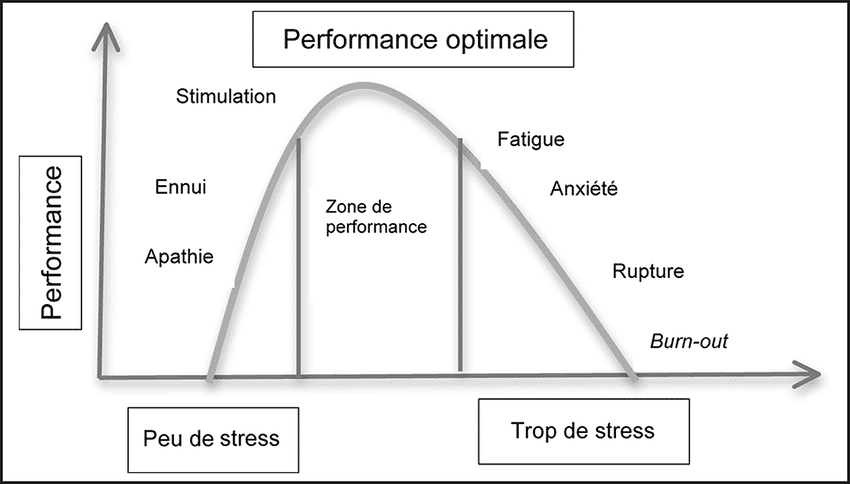It's a paradox: the manager is indispensable to the running of the company... But many of them no longer wish to And even less so in the post-crisis period. And for good reason: successive crises have taken their toll on managers' health. Why is this? What are the issues involved in manager burnout? What practical solutions can be implemented? Michael Nlandu, manager and head of a training centre, explains.

44 % is the number of managers who say they are in a situation of psychological distress, according to the latest barometer from Empreinte Humaine, a firm specialising in the prevention of psychosocial risks. This "alarming figure" can be explained by a number of factors. "We've realised that the job of manager, responsible for the performance and well-being of his or her team, is increasingly demanding, particularly in an increasingly competitive environment. hybrid work mode or remotely". This is a form of management that requires greater investment and intentionality on the part of the manager, in a complex and unstable context. Managing teams remotely can be more difficult for :
- maintaining motivation and commitment
- maintaining links and team cohesion
- assess the needs and expectations of each team member
- resolve conflicts
The result: managers can't take it any more and are burnt out.
"The healthy manager is an endangered species.
Read also : Managing remotely and in hybrid mode: how can you be effective?
And the figures speak for themselves. According to an OpinionWay survey for Maison du management, 62% of French employees do not want to become managers. The reason: a lack of rewards and recognition.
"Managers are no longer the stuff of dreams".
Similarly, according to an OpinionWay survey for Indeed, 51% of managers feel that the job has become too difficult post-covid.
Manager burnout: a combination of factors
According to studies by Yerkes and Dodson (1908), stress has a direct impact on an individual's level of performance. Fatigue, exhaustion, breakdown, even burn-out... prolonged and excessive stress can lead to emotional, cognitive, behavioural and somatic disturbances. The cause: the discrepancy between the perception of the demands to which the individual is subjected and the perception of his or her ability to cope with them.

External factors
There are eight external factors that lead to burnout. And, very often, these factors are cumulative.
These are: work overload; complexity and intensity of work; work-life imbalance; emotional demands (managing the gap between emotions and feelings); lack of autonomy and room for manoeuvre; poor social relations; conflicts of values (disagreements) and job insecurity.
Internal factors
There are also internal factors. Burnout can affect anyone. There is no correlation between age, gender, social class... But there are targets that are more prone. These include people who are highly committed and very attached to the value of work. Other targets include people who fear being or appearing incompetent (impostor syndrome) and ultra-perfectionists.
Detecting warning signs
The warning signs, of four different kinds, translate into a noticeable change. The first is physical. This takes the form of fatigue and pain. This is the somatic translation of stress. Secondly, cognitive: difficulty concentrating, for example. Emotional too: anger, sadness. Behavioural, particularly isolation. The actions to be taken therefore include prevent these events unhappiness.
In 2010, Dr Dominique Servant of Lille University Hospital developed a test to help prevent these symptoms. This test makes it possible to quantify stress levels, for yourself and your team. It is supported by a series of twenty questions to assess stress levels on a scale of 0 to 3, with a final score of between 0 and 60. The aim is to be able to detect both warning signals and trigger factors. Hence the implementation of concrete actions at individual and collective level.
Combating stress: individual solutions
I'm faced with an acute stress situation. What should I do?
"There are specific solutions that can be put in place to overcome or prevent acute stress.
The first practical solution is to do abdominal breathing exercises. By inflating the abdomen and stimulating the diaphragm, you physically and mechanically reduce the "ball in the stomach" and neurologically reduce the secretion of stress hormones. "You can practise. This daily exercise then allows you to tap into this resource.
The second solution would be to "stay connected to the present" so as to stop ruminating or dwelling on things, either through meditation, which allows you to anchor your attention, or through physical activity.
The third solution is to let go. "I act more than I suffer". The aim is to try to take action and widen your sphere of influence, while accepting your limitations.
Read also : Stress management: what tools are needed to meet the new challenges?
Organisation in question: sustainable solutions
Preventing and finding solutions to manager burnout involves looking at the organisation as a whole. At three levels.
At manager level
Respecting timetables, limiting digital notifications, prioritising tasks at different timescales, defining objectives... Managers need to set themselves realistic limits. In other words, set yourself a framework and force yourself to respect it.
Similarly, it's about "giving yourself energy", in other words, taking time for yourself. This involves intentionally setting aside time for "appointments with oneself" in one's daily routine (leisure activities, sport, etc.).
Accept that you are not all-powerful, even though the manager-employee-supervisor system locks the manager into this role. role.
"Resilient organisations are those where the manager is not locked into this role.
The manager must formulate his needs in terms of time ("This month I..."), resources and relationships.
For managers of managers
What do you need to be autonomous? This question is the responsibility of managers, who must give autonomy and resources to their local managers.
This also involves the following actions: listening and reducing irritants, maintaining a positive atmosphere, defining clearer and more precise frameworks and realistic objectives, deciding and prioritising.
"Overall, it's a question of rethinking the organisation of work in order to simplify it.
At company level
Several solutions can be envisaged at company level: setting up networks of trust, training in mental health first aid, reducing meeting times, being more attentive to workload/resources, encouraging corporate physical activity.
"Ideally, these three levels of action should be combined.
What you need to remember: solutions exist to deal with burnout among managers and prevent the many manifestations of unhappiness. On an individual level, there are specific solutions that can be put in place to overcome or prevent a situation of acute stress. We also need to think about the organisation as a whole, at three levels (manager, managers of managers, the company). But first of all, we have to start with ourselves (first level): setting limits that are acceptable to ourselves and being determined to maintain them. These practical solutions can be implemented gradually by the manager himself.





